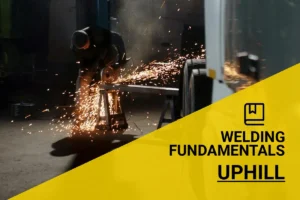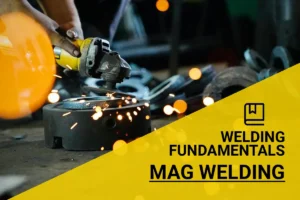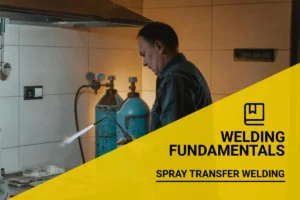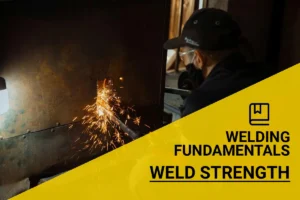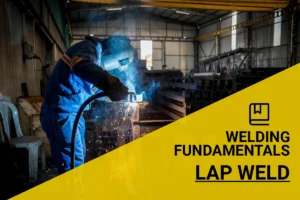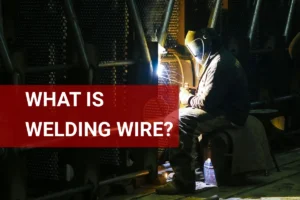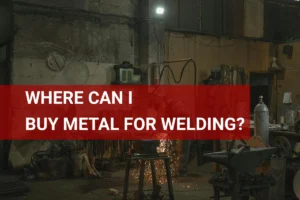What is Brazing in Welding? Discover Its Process, Types, and Applications
Published on: June 23, 2025 | Last modified: March 4, 2025
By: Joe Carter
Brazing is a method of joining two or more metals using a filler material. This filler melts at a lower temperature than the base metals and flows into the joint, creating a strong bond.
One thing people often ask me about is what is brazing in welding? Folks want to know because it’s essential to understand this technique, especially when considering various methodologies. In my experience, welding guidance has saved countless projects and added strength where it’s needed most.
In this guide, I’ll cover several topics related to brazing including how brazing works, different types of brazing, steps to perform it, factors that influence the processes, common issues you might face, aftercare and inspection, and of course, applications of brazing. You’ll also learn about other options you can consider. By the end, you’ll grasp the differences between welding and brazing, plus how to do brazing welding effectively.
Contents
- What is Brazing in Welding?
- How Does Brazing Work in Welding?
- Types Of Brazing
- Steps to Perform Brazing
- Factors Influencing Brazing Processes
- Common Issues You Might Encounter
- Aftercare, Inspection, and Advanced Tips for Brazing
- Applications Of Brazing
- Other Options You Can Consider
- Frequently Asked Questions (FAQs)
- Conclusion
- Additional Reading
What is Brazing in Welding?
Brazing joins metals using a filler that’s heated above 450°C (842°F). This process creates strong bonds while leaving the base materials mostly unchanged. You’ll find brazing in HVAC, automotive, and plumbing, thanks to its efficiency and strength.
How Does Brazing Work in Welding?
Brazing is a metal-joining process that uses a filler metal with a melting point above 450 °C (842 °F) but below that of the base metals. In this process, the filler flows into the joint through capillary action. Materials like bronze or brass are typically used as filler metals. The heat comes from a torch, furnace, or induction heating, allowing focused attachment without melting the base metals.
It’s crucial to maintain the correct temperature—exceeding it can weaken the joint or damage the base metals. Brazing is stronger than soldering but often weaker than welding, making it versatile for applications like plumbing and electronics.
I once made a mistake when I was first learning brazing. I overheated the metal, leading to a poor bond. I learned that understanding melting points is key to success in brazing. If you’re wondering how brazing differs from welding, remember that welding fuses the base metals together, while brazing uses a filler. Knowing these distinctions is essential for proper application.
Types Of Brazing
What types of brazing are used in welding?
Silver Brazing
Silver brazing uses a silver alloy as a filler metal. It’s often used for high-strength and low-temperature applications. Heat the joint and apply silver filler metal, allowing it to flow into gaps through capillary action. If you’re interested in exploring different methods where metals are joined by melting, you can delve into the specifics of fusion welding techniques.
Copper Brazing
Copper brazing utilizes copper as the filler and is ideal for conductive joints. Heat the copper pieces, add a copper alloy filler, and let it melt into the joint, creating a strong bond.
Aluminum Brazing
Aluminum brazing is meant for aluminum, offering excellent corrosion resistance. Heat the aluminum parts, use a specialized aluminum filler, and ensure sufficient heat to allow the filler to bond and solidify.
Soft Brazing
Soft brazing uses low-temperature fillers, often lead-based, and is suitable for non-structural joints. Lightly heat the metals, apply the filler, and achieve a joint that melts at lower temperatures than the base metals.
Vacuum Brazing
Vacuum brazing occurs in a vacuum to prevent oxidation, resulting in strong, clean joints. Place the metals in a vacuum chamber, apply heat to melt the filler, and create a secure bond without contaminants.
So far we covered the different methods of brazing. Next, let’s look at the process involved in performing brazing.
Steps to Perform Brazing
Here are the steps to perform brazing in welding efficiently.
Preparation Of Materials
Clean your workpieces thoroughly with a wire brush or solvent. Removing dirt, grease, and oxides ensures a strong bond; otherwise, the joint may weaken. Common materials like copper and brass are typically used, with thicknesses ranging from 1 mm to 6 mm (0.04 Inches to 0.24 Inches). Clean surfaces are crucial—this can make or break your project!
Choosing the Right Filler Material
Select the appropriate filler metal for your application. Silver solder is a popular choice for general use, so pick an alloy that matches the base materials. The filler metal typically melts at 600°C to 800°C (1112°F to 1472°F). I once used the wrong filler with aluminum, resulting in a weak joint. It’s essential to ensure your welding machine matches your specific needs, especially when choosing the best welding machine for home use.
Heating the Workpieces
Heat your workpieces evenly, focusing the flame on the joint area. Use a torch or another heat source and target a temperature of around 800°C (1472°F) for proper filler flow. Monitor the color change of your materials to gauge the temperature. I once overheated because I didn’t watch closely, which ruined my work, so stay focused!
Applying the Filler
Once the proper temperature is reached, apply the filler to the joint. The molten filler will flow due to capillary action; ensure it’s distributed evenly across the gap. Use only the necessary amount, as excess can weaken the structure. I’ve learned that being conservative here leads to neater, stronger joints. Proper technique is crucial when performing an edge joint weld, and understanding how to weld edge joint can significantly enhance the quality of your welds.
Cooling and Inspection
Let the joint cool naturally—don’t use water to speed up the process. Rapid cooling can cause stress cracks. Once cooled, visually inspect the joint for any issues; it should be shiny and smooth with no gaps or bubbles.
We have now covered the steps to perform brazing. Next, we will examine the factors influencing brazing processes.
Factors Influencing Brazing Processes
What factors affect the brazing process? Let’s break it down.
Base Metal Composition
The type of base metal significantly affects brazing success. Different metals, like copper or aluminum, have varied melting points; for instance, copper melts at 1,984°F (1,085°C). This influences how heat interacts with the metal and the filler material.
Filler Material Selection
Selecting the right filler material is critical. For example, silver alloys are excellent for electrical applications due to their high conductivity. It’s essential to match the filler with the base metals for effective bonding.
Heat Source Type
Different heat sources, like torches or furnaces, influence the brazing process. I once misused a torch on a sensitive alloy, causing warping! Precision matters, so consider using a controlled furnace for uniform heat distribution.
Joint Design Techniques
The joint design affects the strength and effectiveness of the bond. Proper fit-up ensures optimal flow of the filler material, leading to stronger joints. For instance, a gap larger than 0.25 mm (0.01 Inch) can result in inadequate bonding.
Environmental Conditions
Ambient temperature and humidity impact brazing. Higher humidity may introduce unwanted oxidation, weakening the bond. Keeping the workspace dry and well-ventilated enhances the quality of your brazed joints.
We have now covered the factors that influence brazing processes. Next, we will examine common issues you might encounter.
Common Issues You Might Encounter
Let’s look at unique problems you might face when brazing.
Improper Filler Flow
Brazing requires proper filler flow. Check the capillary action; if the filler doesn’t flow evenly, it can cause weak joints. Use a suitable torch and adjust the heat for consistent flow.
Poor Joint Fit-up
Brazing relies on a tight fit. When I misaligned parts once, the joint failed under stress. Always check gaps; aim for 0.05–0.15 mm (0.002–0.006 In) spacing for the best results.
Overheating Of Materials
Brazing can overheat base materials. Excess heat can change properties, weakening the connection. Use temperature sensors; target around 450–850°C (842–1562°F) depending on the filler.
Contamination Of Surfaces
Brazing surfaces must be clean. Oil, grease, or rust can contaminate and prevent adhesion. Clean with solvents or mechanical methods before brazing; aim for a surface cleanliness rating of at least 3.
Inadequate Flux Application
Brazing uses flux to prevent oxidation. Without sufficient flux, you risk poor joint strength. Apply flux uniformly; a thin layer—no thicker than 0.2 mm (0.008 In)—is ideal for effective protection during heating.
We have now covered common challenges you may face. Next, we will examine aftercare, inspection, and advanced brazing tips.
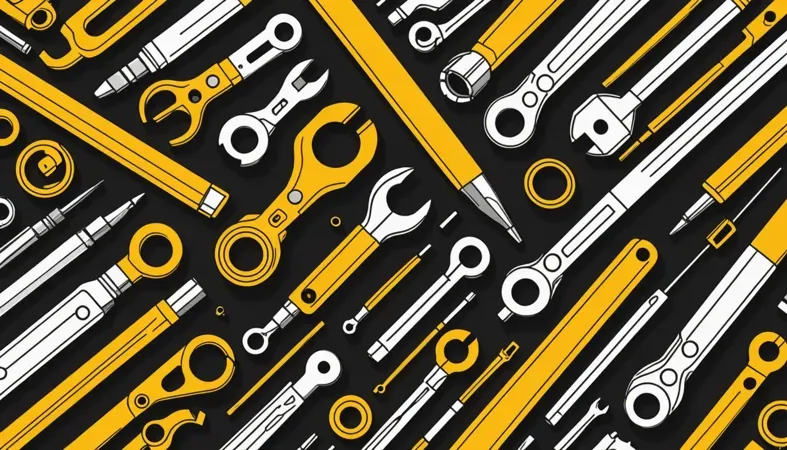
Aftercare, Inspection, and Advanced Tips for Brazing
Here’s some advice on caring for and assessing your brazed joints, along with expert recommendations.
Aftercare Recommendations
After you’ve finished brazing, clean the joint with a wire brush to remove any flux residues. This prevents corrosion and helps maintain the joint’s strength. Once cleaned, apply a light coat of anti-corrosive spray, like Rust-Oleum, to enhance durability by 25% over time.
Inspection Techniques
Inspect the joint visually for any gaps or voids. Ensure there’s no discoloration or oxidation in critical areas, as these often indicate overheating. For precise checks, use an ultrasonic tester, like the M700 model, to measure bond integrity without damage. Understanding how dross forms is crucial to improving welding results, and more information can be found about dross formation in welding.
Expert Tips
Start your projects with a preheat setup of exactly 200°C (392°F) for aluminum; this significantly reduces the risk of cracking. Use a flux that has a melting point 100°C (212°F) lower than your filler material for an optimal bond. Finally, maintain a 45-degree angle when feeding the filler; this creates a stronger pool and joint.
Applications Of Brazing
I’ve known people to use brazing for joining metals, but it has many uses, such as:
- Aerospace Components: In aircraft, brazing securely joins high-temperature alloys. It’s crucial for durability and lightweight strength, making it popular in this field.
- HVAC Systems: Brazing is used to merge copper pipes. It prevents leaks and ensures efficient refrigerant flow, which is why it’s often the preferred method.
- Automotive Parts: This technique connects dissimilar metals, like aluminum and steel. It enhances strength without excessive heat, making it a common choice in car manufacturing.
- Electronics: Brazing secures components on circuit boards. Its precise application ensures robust connectivity and reliability in devices.
Other Options You Can Consider
When thinking about alternatives to brazing, you might consider welding options like TIG (Tungsten Inert Gas) and MIG (Metal Inert Gas) welding. These methods can offer strong, durable joints, especially with metals like steel and aluminum. Speaking from my own experience, I’ve often preferred MIG welding for its speed and efficiency in large projects.
Another choice is soldering, particularly for electronics. Products like lead-free solder are great for joining small components without high heat. This might be best in applications where heat-sensitive materials are involved, as it reduces the risk of warping or damaging delicate parts.
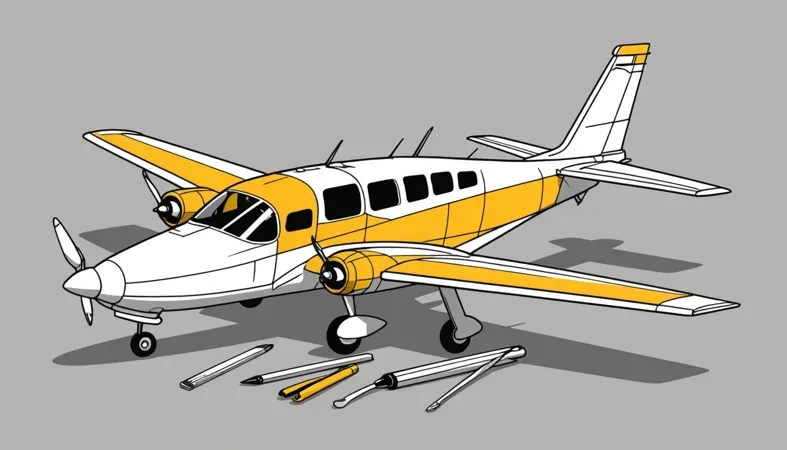
Frequently Asked Questions (FAQs)
Now let us look at the common questions I typically get asked about brazing.
Why Would You Braze Instead Of Weld?
Yes, you would choose to braze instead of weld for several reasons. Brazing allows you to join dissimilar metals, which traditional welding often can’t do, and provides less thermal distortion. Plus, it’s ideal for thin materials, maintaining structural integrity at temperatures around 450°C (842°F).
However, if you are working with zinc-plated steel, it’s important to understand the challenges associated with its welding process. For more information, consider exploring the techniques for welding zinc-plated steel.
What is the Difference Between Soldering, Welding, and Brazing?
The difference between soldering, welding, and brazing lies in the joining process and temperature. Soldering occurs below 450°C (842°F), while welding often requires temperatures above 1,500°C (2,732°F). Brazing, on the other hand, sits in the middle, making it versatile. In some instances, understanding complex welding procedures such as a complete joint penetration weld is crucial for ensuring structural integrity.
What is the Purpose Of Brazing?
The purpose of brazing is to create strong joints between metals or alloys. It uses a filler metal with a melting point above 450°C (842°F) but below that of the workpieces. This method provides strength while minimizing material damage, making it efficient for various applications.
How is Brazing Different From Welding?
Brazing is different from welding primarily in heat application and filler metal. In brazing, the filler metal flows into the joint by capillary action without melting the base metals. This technique usually requires lower heat, preserving the properties of the workpieces. Explore the costs of welding rods to understand material choices better.
How Do You Braze Weld?
You braze weld by first cleaning metal surfaces and preheating them if needed. Next, you place filler metal and apply heat until it melts. The filler metal should flow into the joint. This precise method creates strong, durable connections at lower temperatures than conventional welding.
Conclusion
We covered various aspects of brazing in welding, including how it works, the types of brazing, the steps to perform it, factors influencing the process, common issues, and aftercare tips. Additionally, we discussed applications of brazing and looked at alternatives available for different projects. Each item sheds light on the importance and practicality of welding fundamentals in various fields.
Happy to summarize what is brazing in welding. Essentially, it’s a joining process using a filler metal at temperatures above 450°C (842°F) that’s different from welding. The key takeaway? Brazing creates strong bonds without melting the base metals, ideal for applications like pipes and intricate parts.
For further insights and expert guidance on welding practices, feel free to visit What is Welding.
Additional Reading
- American Welding Society. (2015). AWS D1.1/D1.1M: Structural Welding Code – Steel. Miami, FL: AWS.
- American Welding Society. (2021). AWS B2.1: Standard for Welding Procedure and Performance Qualification. Miami, FL: AWS.
- Lincoln Electric. (2020). The Procedure Handbook of Arc Welding (15th ed.). Cleveland, OH: Lincoln Electric Company.
Joe Carter is a retired welding professional with over 40 years of hands-on experience in the industry, spanning ship repair, structural welding, and even underwater projects. Joe is a master of MIG, TIG, and Stick welding. Passionate about mentoring the next generation of welders, Joe now shares his decades of expertise and practical insights to help others build rewarding careers in welding.
American Welding Society, Applications Of Brazing, Brazing, Brazing Techniques, Filler Material, Metal Joining, MIG Welding, Structural Integrity, Welding, Welding Techniques
